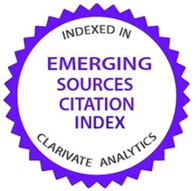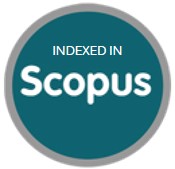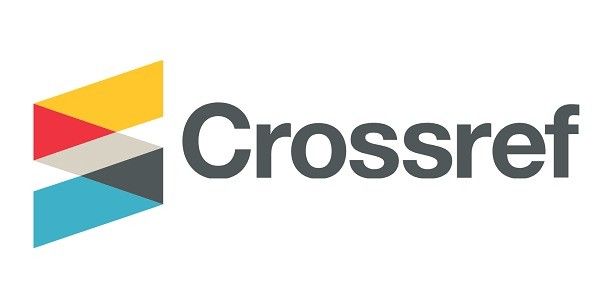Influencia de los estilos de liderazgo en el comportamiento innovador de cadetes peruanos
DOI:
https://doi.org/10.21830/19006586.732Palabras clave:
formación militar, innovación, liderazgo, liderazgo transaccional, transformacionalResumen
Esta investigación busca determinar la influencia de los estilos de liderazgo transaccional y transformacional en el comportamiento innovador. La investigación siguió un enfoque metodológico cuantitativo, de corte transversal, de alcance correlacional explicativo y con diseño no experimental. Se empleó una muestra de 386 cadetes de la Escuela Militar de Chorrillos Coronel Francisco Bolognesi (Perú). Los resultados se evaluaron mediante el modelamiento de ecuaciones estructurales utilizando mínimos cuadrados parciales. Se encontró que existe una influencia de los dos estilos de liderazgo estudiados sobre el comportamiento innovador de los cadetes. De acuerdo con la varianza explicada, el liderazgo transaccional explicaría el 22 % y el liderazgo transformacional, el 31 % de la variabilidad del comportamiento innovador. Esta investigación contribuye a comprender esta relación entre liderazgo y comportamiento innovador en el ámbito militar.
Descargas
Referencias bibliográficas
Afsar, B., Badir, Y., & Kiani, U. S. (2016). Linking spiritual leadership and employee proenvironmental behavior: The influence of workplace spirituality, intrinsic motivation, and environmental passion. Journal of Environmental Psychology, 45, 79-88. https://doi.org/10.1016/j.jenvp.2015.11.011
Afsar, B., Badir, Y., Saeed, B., & Hafeez, S. (2017). Transformational and transactional leadership and employee’s entrepreneurial behavior in knowledge–intensive industries. The International Journal of Human Resource Management, 28(2), 307-332. https://doi.org/10.1080/09585192.2016.1244893
Anderson, J. C., & Gerbing, D. W. (1988). Structural equation modeling in practice: A review and recommended two-step approach. Psychological Bulletin, 103(3), 411-423. http://dx.doi.org/10.1037/0033- 2909.103.3.411
Anderson, N., Potočnik, K., & Zhou, J. (2014). Innovation and creativity in organizations: A state-of-the-science review and prospective commentary. Journal of Management, 40(5), 1297-1333. https://doi.org/10.1177/0149206314527128
Aryee, S., Walumbwa, F. O., Zhou, Q., & Hartnell, C. A. (2012). Transformational leadership, innovative behavior, and task performance: Test of mediation and moderation processes. Human Performance, 25(1), 1-25. https://doi.org/10.1080/08959285.2011.631648
Avolio, B. J., & Bass, B. M. (1995). Individual consideration viewed at multiple levels of analysis: A multi-level framework for examining the diffusion of transformational leadership. The Leadership Quarterly, 6(2), 199-218. https://doi.org/10.1016/1048-9843(95)90035-7
Barroso C., C., Villegas P., M., & Casillas B., J. (2008). Transformational leadership and followers’ attitudes: The mediating role of psychological empowerment. The International Journal of Human Resource Management, 19, 1842-1863. https://doi.org/10.1080/09585190802324601
Bass, B. M. (1985). Leadership and performance beyond expectations. Free Press.
Bass, B. M. (1990a). From transactional to transformational leadership: Learning to share the vision. Organizational Dynamics, 18(3), 19-31.
Bass, B. M. (1990b). Handbook of leadership: Theory, research and managerial implications. The Free Press.
Bass, B. M. (1999). Two decades of research and development in transformational leadership. European Journal of Work and Organizational Psychology, 8(1), 9-32. https://doi.org/10.1080/135943299398410
Bass B. M., & Avolio, B. J. (2000). MLQ Multifactor Leadership Questionnaire. Sampler set: technical report, leader form, rater form, and scoring key for MLQ Form 5XShort (2nd ed.). Mindgarden.
Basu, R., & Green, S. G. (1997). Leader‐member exchange and transformational leadership: An empirical examination of innovative behaviors in leader‐member dyads. Journal of Applied Social Psychology, 27(6), 477-499. https://doi.org/10.1111/j.1559-1816.1997.tb00643.x
Bednall, T. C., Rafferty, A., Shipton, H., Sanders, K., & Jackson, C. (2018). Innovative behaviour: How much transformational leadership do you need? British Journal of Management, 29(4), 796-816.
Blake, R., & Mouton, J. (1964). The managerial grid: The key to leadership excellence. Gulf Publishing Company.
Burns, J. M. (1978). Leadership. Harper & Row.
Carmeli, A., Meitar, R., & Weisberg, J. (2006). Self-leadership skills and innovative behavior at work. International Journal of Manpower, 27, 75-90. https://bit.ly/3rlmnlg
Carmines, E. G., & Zeller, R. A. (1979). Reliability and validity assessment. Sage.
Chen, M. Y., Lin, C. Y., Lin, H. E., & McDonough, E. F. (2012). Does transformational leadership facilitate technological innovation? The moderating roles of innovative culture and incentive compensation. Asia Pacific Journal of Management, 29(2), 239-264. https://doi.org/10.1007/s10490-012-9285-9
Chin, W. (1998). The partial least square approach to structural equation modelling. En G. Marcoulides (Ed.), Modern methods for business research (pp. 295-369). Lawrence Erlbaum.
Choi, S. B., Kim, K., Ullah, S. E., & Kang, S. W. (2016). How transformational leadership facilitates innovative behavior of Korean workers. Personnel Review, 45(3), 459-479. https://doi.org/10.1108/PR-03- 2014-0058
Darawong, C. (2020). The influence of leadership styles on new product development performance: The moderating effect of product innovativeness. Asia Pacific Journal of Marketing and Logistics (pre-prensa). https://doi.org/10.1108/APJML-05-2019-0290.
Faraz, N. A., Yanxia, C., Ahmed, F., Estifo, Z. G., & Raza, A. (2018). The influence of transactional leadership on innovative work behavior—a mediation model. European Journal of Business and Social Sciences, 7(1), 51-62.
Fornell, C., & Larcker, D. F. (1981). Evaluating structural equation models with unobservable variables and measurement error. Journal of Marketing Research, 18(1), 39-50.
García‐Morales, V. J., Lloréns‐Montes, F. J., & Verdú‐Jover, A. J. (2008). The effects of transformational leadership on organizational performance through knowledge and innovation. British Journal of Management, 19(4), 299-319. https://doi.org/10.1111/j.1467-8551.2007.00547.x
Gardner, W. L., & Avolio, B. J. (1998). The charismatic relationship: A dramaturgical perspective. Academy of Management Review, 23(1), 32-58. https://doi.org/10.5465/amr.1998.192958
Hair, J. F., Hult, G. T., Ringle, C., & Sarstedt, M. (2016). A primer on partial least squares structural equation modeling (PLS-SEM). Sage.
Hee, C., & Young, J. (2019). Effects of psychological ownership, self-leadership, and social exchange relationships on innovative behavior of military hospital personnel. Korean Journal of Occupational Health Nursing, 28(3), 166-175.
Hersey, P., & Blanchard, K. H. (1969). Life cycle theory of leadership. Training & Development Journal, 23(5), 26-34.
Horowitz, M. C., Stam, A. C., & Ellis, C. M. (2015). Why leaders fight. Cambridge University Press.
Hou, X., Li, W., & Yuan, Q. (2018). Frontline disruptive leadership and new generation employees’ innovative behaviour in China: The moderating role of emotional intelligence. Asia Pacific Business Review, 24(4), 459-471.
Hughes, D. J., Lee, A., Tian, A. W., Newman, A., & Legood, A. (2018). Leadership, creativity, and innovation: A critical review and practical recommendations. The Leadership Quarterly, 29(5), 549-569.
Islamutdinov, V. F. (2017). Efficiency assessment and development forecast of the institutions stimulating the innovative behavior of economic entities in a resource-extraction region. Journal of Applied Economic Sciences (JAES), 12(49), 808-819. https://bit.ly/37Hy3qY
Jansen, M. M., & Delahaij, R. (2019). Leadership acceptance through the lens of social identity theory: A case study of military leadership in Afghanistan. Armed Forces & Society, 46(4), 657-676. https://doi.org/10.1177%2F0095327X19845027
Janssen, O. (2001). Fairness perceptions as a moderator in the curvilinear relationships between job demands, and job performance and job satisfaction. Academy of Management Journal, 44, 1039-1050. https://doi.org/10.5465/3069447
Janssen, O. (2005). The joint impact of perceived influence and supervisor supportiveness on employee innovative behaviour. Journal of Occupational and Organizational Psychology, 78(4), 573-579. https://doi.org/10.1348/096317905X25823
Judge, T. A., & Piccolo, R. F. (2004). Transformational and transactional leadership: A meta-analytic test of their relative validity. Journal of Applied Psychology, 89(5), 755-768.
Jung, D. D., Wu, A., & Chow, C. W. (2008). Towards understanding the direct and indirect effects of CEOs’ transformational leadership on firm innovation. The Leadership Quarterly, 19(5), 582-594. https://doi.org/10.1016/j.leaqua.2008.07.007
Kim, M. S., & Koo, D. W. (2017). Linking LMX, engagement, innovative behavior, and job performance in hotel employees. International Journal of Contemporary Hospitality Management, 29(12), 3044- 3062. https://doi.org/10.1108/IJCHM-06-2016-0319
Knezović, E., & Drkić, A. (2020). Innovative work behavior in SMEs: The role of transformational leadership. Employee Relations: The International Journal (pre-prensa). https://doi.org/10.1108/ER-03-2020-0124
Kolb, J. A. (1995). Leader behaviors affecting team performance: Similarities and differences between leader/member assessments. The Journal of Business Communication, 32(3), 233-248. https://doi.org/10.1177/002194369503200302
Lee, A., Martin, R., Thomas, G., Guillaume, Y., & Maio, G. R. (2015). Conceptualizing leadership perceptions as attitudes: Using attitude theory to further understand the leadership process. The Leadership Quarterly, 26(6), 910-934. https://doi.org/10.1016/j.leaqua.2015.10.003
Lowe, K. B., Kroeck, K. G., & Sivasubramaniam, N. (1996). Effectiveness correlates of transformational and transactional leadership: A meta-analytic review of the MLQ literature. The Leadership Quarterly, 7(3), 385-425.
Ma, X., & Jiang, W. (2018). Transformational leadership, transactional leadership, and employee creativity in entrepreneurial firms. The Journal of Applied Behavioral Science, 54(3), 302-324. https://doi.org/10.1177/0021886
Messmann, G., & Mulder, R. H. (2011). Innovative work behaviour in vocational colleges: Understanding how and why innovations are developed. Vocations and Learning, 4, 63-84. https://doi.org/10.1007/s12186-010-9049-y
Michaelis, B., Stegmaier, R., & Sonntag, K. (2009). Shedding light on followers’ innovation implementation behavior. Journal of Managerial Psychology, 25(4), 408-429. https://doi.org/10.1108/02683941011035304
Noruzy, A., Dalfard, V. M., Azhdari, B., Nazari-Shirkouhi, S., & Rezazadeh, A. (2013). Relations between transformational leadership, organizational learning, knowledge management, organizational innovation, and organizational performance: An empirical investigation of manufacturing firms. The International Journal of Advanced Manufacturing Technology, 64(5-8), 1073-1085. https://doi.org/10.1007/s00170-012-4038-y
Pieterse, A. N., Van Knippenberg, D., Schippers, M., & Stam, D. (2010). Transformational and transactional leadership and innovative behavior: The moderating role of psychological empowerment. Journal of Organizational Behavior, 31(4), 609-623. https://doi.org/10.1002/job.650
Prasad, B., & Junni, P. (2016). CEO transformational and transactional leadership and organizational innovation. Management Decision, 54(7), 1542-1568. https://doi.org/10.1108/MD-11-2014-0651
Quinn, J. B. (1985). Managing innovation: controlled chaos. Harvard Business Review, 63(3), 73-84.
Reiter, D., & Wagstaff, W. A. (2018). Liderazgo y eficacia militar. Análisis de Política Exterior, 14(4), 490- 511.
Ricks, T. E. (2009). The gamble: General Petraeus and the American military adventure in Iraq. Penguin.
Ringle, C.M., & Sarstedt, M. (2016). Gain more insight from your PLS-SEM results: The importance-performance map analysis. Industrial Management & Data Systems, 116(9), 1865-1886. http://dx.doi.org/10.1108/IMDS-10-2015-0449
Runhaar, P. (2008). Promoting teachers’ professional development [unpublished doctoral dissertation, Universiteit Twente, Enschede, Netherlands].
Scott, S. G., & Bruce, R. A. (1994). Determinants of innovative behavior: A path model of individual innovation in the workplace. Academy of Management Journal, 37, 580-607. https://doi.org/10.5465/256701
Senior, B., & Fleming, J. (2006). Organizational change. Prentice Hall.
Shalley, C. E. (1995). Effects of coaction, expected evaluation, and goal setting on creativity and productivity. Academy of Management Journal, 38(2), 483-503. https://doi.org/10.5465/256689
Shalley, C. E., & Gilson, L. L. (2004). What leaders need to know: A review of social and contextual factors that can foster or hinder creativity. The Leadership Quarterly, 15(1), 33-53. https://doi.org/10.1016/j. leaqua.2003.12.004
Tannenbaum, R., & Schmidt, W. (1973). How to choose leadership pattern. Harvard Business Review, 36(2), 95-101.
Tayal, R., Upadhya, R., Yadav, M., Rangnekar, S., & Singh, R. (2018). The impact of transformational leadership on employees’ acceptance to change: Mediating effects of innovative behaviour and moderating effect of the use of information technology. VINE. Journal of Information and Knowledge Management Systems, 48(4), 559-578. https://doi.org/10.1108/VJIKMS-05-2018-0039
Wolford, S. (2007). The turnover trap: New leaders, reputation, and international conflict. American Journal of Political Science, 51(4), 772-788.
Wong, K. K. (2013). Partial least squares structural equation modeling (PLS-SEM) techniques using SmartPLS. Marketing Bulletin, 24(1), 1-32.
Yang, S. C., & Huang, Y.-F. (2008). A study of high school English teachers’ behavior, concerns and beliefs in integrating information technology into English instruction. Computers in Human Behavior, 24(3), 1085-1103. https://doi.org/10.1016/j.chb.2007.03.009
Descargas
Publicado
Cómo citar
Número
Sección
| Estadísticas de artículo | |
|---|---|
| Vistas de resúmenes | |
| Vistas de PDF | |
| Descargas de PDF | |
| Vistas de HTML | |
| Otras vistas | |

























